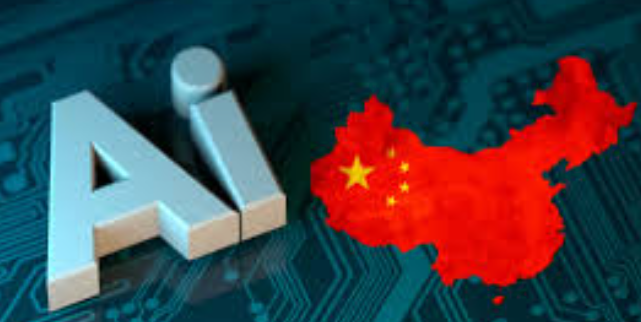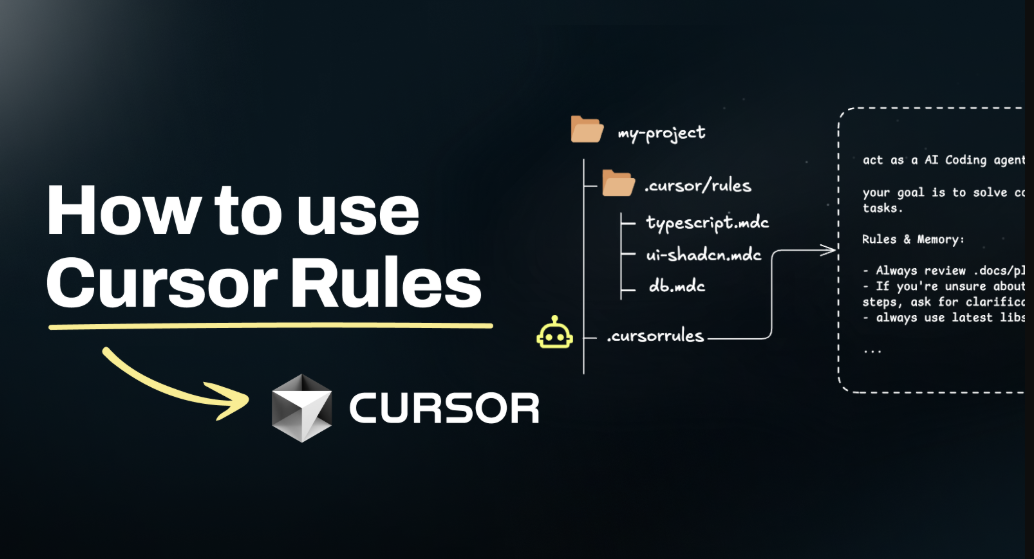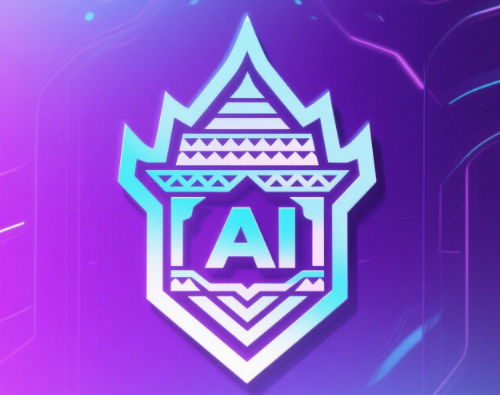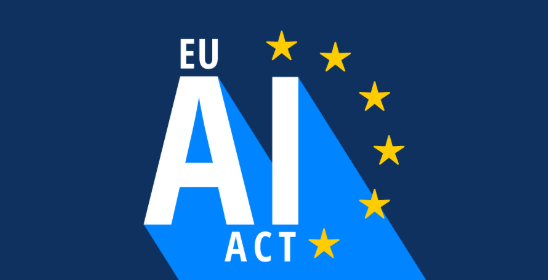China has established a robust framework of over 20 industry guidelines and standards specifically designed to regulate AI agent development, deployment, and governance across various sectors. These comprehensive AI development standards address critical aspects including ethical considerations, technical specifications, security protocols, and cross-border data regulations that are reshaping how artificial intelligence systems are built and implemented throughout the Chinese technology ecosystem. As China positions itself as a global leader in AI innovation, these standards reflect a strategic balance between encouraging technological advancement and ensuring responsible development practices that protect users, businesses, and national interests while establishing benchmarks that are increasingly influencing international AI governance frameworks.
The Evolution of AI Development Standards in China's Technology Ecosystem
China's approach to AI development standards has undergone a remarkable transformation over the past decade, evolving from broad guidelines to highly specific technical and ethical frameworks. This evolution reflects China's growing sophistication in AI technologies and its strategic vision for leadership in this critical domain.
The journey began around 2017 with the release of the "New Generation Artificial Intelligence Development Plan," which outlined China's ambition to become the world leader in AI by 2030. This foundational document set the stage for more detailed standards development, emphasizing the need for both innovation and governance. ??
By 2019, we saw the emergence of the first sector-specific AI standards, particularly in areas like facial recognition, autonomous vehicles, and smart manufacturing. These early standards focused primarily on technical interoperability and basic safety requirements rather than comprehensive ethical frameworks.
The real watershed moment came in 2021-2022, when China's standards bodies, led by the China National Information Technology Standardization Committee, began releasing a series of more sophisticated guidelines that addressed not just technical specifications but also ethical considerations, data security, and algorithmic transparency. This shift coincided with China's broader regulatory tightening across the tech sector.
Today's landscape of AI development standards in China is characterized by several key features:
A multi-layered approach that includes national standards, industry-specific guidelines, and local regulations
Strong emphasis on data security and sovereignty, particularly for applications with national security implications
Detailed technical specifications that enable interoperability while maintaining Chinese technological independence
Growing focus on ethical AI development, including fairness, transparency, and accountability mechanisms
Coordination between government agencies, industry leaders, and academic institutions in standards development
The Cyberspace Administration of China (CAC) has emerged as a central player in this ecosystem, working alongside the Ministry of Industry and Information Technology (MIIT) and the China Academy of Information and Communications Technology (CAICT) to develop and enforce these standards. This collaborative approach ensures that standards reflect both policy priorities and technical realities. ??
What's particularly noteworthy is how China has increasingly positioned its AI standards as alternatives to Western frameworks. While there are similarities in broad principles, Chinese standards tend to place greater emphasis on social harmony, national development goals, and data sovereignty than their Western counterparts, which often prioritize individual privacy and rights-based approaches.
Recent developments indicate a growing interest in international influence, with China actively participating in global AI standards bodies like the International Organization for Standardization (ISO) and proposing its domestic standards as templates for international adoption. This represents a strategic effort to shape global AI governance in ways that align with Chinese priorities and technical approaches.

Key AI Development Standards and Guidelines Shaping China's AI Agent Ecosystem
China's comprehensive framework for AI governance comprises over 20 distinct standards and guidelines, each addressing specific aspects of AI development and deployment. These standards work together to create a cohesive regulatory environment that balances innovation with security and ethical considerations.
Foundational AI Development Standards
At the core of China's AI regulatory framework are several foundational standards that establish basic principles and requirements:
GB/T 40869-2021: Artificial Intelligence Terminology - This national standard establishes consistent terminology across the AI industry, ensuring clear communication among developers, regulators, and users. It covers over 300 AI-related terms with precise definitions.
GB/T 40871-2021: Framework and Reference Architecture - Outlines the basic architectural components required for compliant AI systems, including data processing pipelines, model development workflows, and deployment architectures.
GB/T 40873-2021: Assessment Framework for AI Systems - Provides comprehensive criteria for evaluating AI systems across dimensions of performance, safety, reliability, and ethical compliance.
These foundational standards create a common language and framework that enables consistent implementation of more specific guidelines across different sectors and applications. They represent China's effort to standardize AI development at its most fundamental level. ??
Ethical and Governance Standards
China has developed increasingly sophisticated ethical frameworks for AI development:
Ethical Norms for New Generation Artificial Intelligence (MOST, 2021) - Establishes six core principles: harmony and friendliness, fairness and justice, inclusivity and sharing, respect for privacy, security and controllability, and shared responsibility.
Code of Practice for AI Security (CAICT, 2022) - Provides detailed guidelines for ensuring AI systems remain secure, reliable, and resistant to adversarial attacks or manipulation.
Guidelines on Strengthening the Management of Algorithmic Recommendation Services (CAC, 2022) - Sets requirements for transparency, user control, and prevention of discriminatory outcomes in algorithmic systems.
These ethical standards reflect China's distinctive approach to AI governance, emphasizing collective welfare, social harmony, and alignment with national development goals alongside more universal principles like fairness and privacy. ??
Sector-Specific AI Standards
China has developed tailored standards for key industries where AI deployment is most advanced:
Intelligent Manufacturing Standards System Construction Guidelines - Comprehensive framework for AI implementation in manufacturing settings, covering everything from predictive maintenance to quality control systems.
Autonomous Vehicle Technology Roadmap 2.0 - Detailed technical standards for self-driving vehicles, including sensor requirements, decision-making algorithms, and safety verification procedures.
Medical AI Device Registration and Management Measures - Regulatory framework for AI applications in healthcare, including clinical validation requirements and risk management protocols.
Smart City Data and Service Standards - Guidelines for AI deployment in urban management, covering everything from traffic optimization to public safety applications.
These sector-specific standards translate broad principles into actionable requirements for developers working in particular domains, ensuring that AI applications meet the unique needs and constraints of different industries. ??
Data and Security Standards
Given China's emphasis on data security and sovereignty, several standards focus specifically on these aspects:
Data Security Law Implementation Guidelines for AI Systems - Detailed requirements for data collection, storage, processing, and transfer in AI applications, with particular emphasis on sensitive and personal information.
Cross-border Data Transfer Security Assessment Measures - Protocols for evaluating and securing data that moves across national boundaries, particularly relevant for multinational AI deployments.
Critical Information Infrastructure Security Protection Regulations - Special requirements for AI systems that operate within sectors designated as critical infrastructure, including additional security and reliability standards.
These data-focused standards reflect China's strategic approach to information as a national resource that requires careful management and protection, particularly when AI systems are processing large volumes of potentially sensitive data. ??
| Category | Key Standards | Primary Focus | Implementing Bodies |
|---|---|---|---|
| Foundational | GB/T 40869-2021, GB/T 40871-2021 | Terminology, architecture, assessment frameworks | SAMR, MIIT, CAICT |
| Ethical Governance | Ethical Norms for AI, Algorithmic Recommendation Guidelines | Fairness, transparency, accountability, social harmony | CAC, MOST, CAICT |
| Sector-Specific | Intelligent Manufacturing Standards, Medical AI Device Measures | Industry-specific requirements and implementations | MIIT, NMPA, MOHURD |
| Data & Security | Data Security Law Implementation, Cross-border Transfer Measures | Data protection, sovereignty, national security | CAC, MSS, MIIT |
Implementing AI Development Standards: Practical Approaches for Developers and Organizations
For organizations developing or deploying AI systems in China, navigating the complex landscape of AI development standards requires a strategic and systematic approach. Here's a comprehensive guide to implementation that balances compliance with innovation.
Five-Step Implementation Process for AI Development Standards Compliance
Comprehensive Standards Mapping and Gap Analysis: The first critical step involves thoroughly mapping the applicable standards landscape for your specific AI application and conducting a detailed gap analysis against your current development practices. Begin by identifying which of China's AI standards apply to your particular use case, considering both horizontal standards (those that apply across all AI applications) and vertical standards (those specific to your industry sector). This requires cross-functional collaboration between legal, technical, and business teams to ensure no relevant standards are overlooked. Create a comprehensive compliance matrix that maps each standard to specific components of your AI system, noting the requirements, implementation status, and responsible teams. For multinational organizations, this step should also include analysis of how Chinese standards differ from those in other jurisdictions where you operate, identifying potential conflicts or areas requiring market-specific adaptations. The gap analysis should be methodical and thorough, examining everything from data collection practices and model development processes to deployment architectures and monitoring systems. Document all identified gaps with priority levels based on compliance risk, implementation difficulty, and business impact to create a structured roadmap for addressing them. This foundational step typically requires 1-3 months depending on the complexity of your AI system and should be revisited whenever significant standards updates occur or your system undergoes major changes. ??
Technical Architecture Alignment and Adaptation: Once you've identified applicable standards and gaps, the next step involves adapting your AI system's technical architecture to meet compliance requirements while maintaining performance and innovation capabilities. Begin by reviewing your data processing pipeline against relevant data security and privacy standards, implementing required controls such as data classification systems, access restrictions, and processing limitations. Next, examine your model development workflow to ensure it incorporates required documentation, validation procedures, and explainability mechanisms. This may require implementing additional testing frameworks, bias detection tools, or model documentation systems. For deployment architectures, ensure they include the necessary monitoring capabilities, user feedback mechanisms, and intervention protocols required by Chinese standards. This often means developing or enhancing logging systems, creating administrative dashboards, and implementing emergency shutdown capabilities. Throughout this process, maintain a balance between compliance and innovation by designing flexible architectures that can adapt to evolving standards without requiring complete system rebuilds. Consider implementing a microservices approach where compliance-critical components can be updated independently from core functionality. Document all architectural decisions and their rationale, creating a compliance-by-design framework that can be referenced and updated as standards evolve. This technical alignment phase typically requires 3-6 months of focused engineering work and should involve regular reviews with compliance and legal teams to ensure interpretations of standards are correct and implementations are sufficient. ??
Governance Framework Development and Implementation: With technical architecture aligned to standards requirements, organizations must next develop robust governance frameworks that ensure ongoing compliance through organizational structures, policies, and processes. Begin by establishing clear roles and responsibilities for AI governance, typically including an AI ethics committee, compliance officers, and technical leads with specific accountability for standards adherence. Develop comprehensive documentation covering all aspects of your AI system, including design decisions, data sources, model characteristics, validation procedures, and deployment safeguards. This documentation should directly reference relevant standards to demonstrate compliance rationale. Implement formal review processes at key stages of the AI lifecycle, including initial design reviews, pre-training data audits, model validation assessments, and pre-deployment security evaluations. These reviews should involve stakeholders from across the organization including legal, ethics, security, and business teams. Create clear escalation paths for addressing compliance issues, with defined thresholds for when remediation is required versus when development can proceed with monitoring. Establish ongoing monitoring and audit procedures that regularly assess continued compliance as both your system and the standards landscape evolve. This includes automated compliance checks where possible, regular manual reviews, and periodic third-party assessments. Finally, develop training programs to ensure all team members understand relevant standards and their specific responsibilities in maintaining compliance. This governance framework development typically requires 2-4 months to establish and should be treated as a living system that evolves with organizational learning and standards changes. ??
Stakeholder Engagement and Relationship Building: Successful implementation of AI development standards in China requires proactive engagement with regulatory bodies, industry associations, and other key stakeholders. Begin by establishing relationships with relevant regulatory authorities before compliance issues arise. This includes identifying key contacts at organizations like the Cyberspace Administration of China (CAC), the Ministry of Industry and Information Technology (MIIT), and sector-specific regulators. Participate actively in industry associations and standards development organizations, which provides early insight into emerging standards and the opportunity to shape their development. Consider joining technical committees or working groups focused on AI governance within organizations like the China National Information Technology Standardization Committee. Engage with academic institutions and research centers working on AI ethics and governance, which can provide valuable expertise and perspective on standards interpretation and implementation best practices. Develop relationships with legal and consulting firms specializing in Chinese technology regulation to access specialized knowledge and experience. Establish communication channels with peer organizations facing similar compliance challenges, creating opportunities for knowledge sharing while respecting competitive boundaries. Create a systematic approach to monitoring regulatory developments, including dedicated staff responsible for tracking standards updates, policy statements, and enforcement actions. This stakeholder engagement work is ongoing rather than a one-time project, requiring dedicated resources and executive support to maintain effective relationships over time. Organizations that invest in these relationships gain significant advantages in navigating China's complex and evolving AI regulatory landscape. ??
Continuous Improvement and Adaptation System: The final and ongoing step involves establishing systems for continuous monitoring, learning, and adaptation as both standards and your AI systems evolve. Implement a formal standards monitoring process with assigned responsibility for tracking updates to existing standards and the emergence of new ones. This should include regular reviews of announcements from standards bodies, regulatory agencies, and industry associations. Develop a systematic approach to evaluating the impact of standards changes on your systems, including technical assessment, compliance gap analysis, and implementation planning. Create a feedback loop from operational experience back to compliance planning, systematically collecting data on how standards implementation affects system performance, user experience, and business outcomes. Use this data to refine your approach to balancing compliance and innovation. Establish regular compliance review cycles that assess your AI systems against current standards, identifying both areas of non-compliance and opportunities for more efficient compliance approaches. Implement a knowledge management system that captures learnings about standards implementation, including successful approaches, challenges encountered, and regulatory feedback received. This creates an organizational memory that prevents repeated mistakes and enables continuous improvement. Develop metrics for measuring compliance effectiveness that go beyond binary compliance/non-compliance assessments to evaluate the quality and efficiency of your standards implementation. Finally, create a culture of compliance innovation that encourages teams to develop novel approaches to meeting standards requirements while advancing technical capabilities and user experience. This continuous improvement system should be fully integrated into your AI development lifecycle rather than treated as a separate compliance function, ensuring that standards considerations are embedded in everyday decision-making rather than addressed as an afterthought. ??
Common Implementation Challenges and Solutions
Organizations implementing China's AI development standards typically encounter several common challenges:
Interpreting Ambiguous Requirements: Many standards contain principles or requirements that are subject to interpretation. Solution: Develop relationships with regulatory authorities who can provide clarification, and document your interpretation rationale.
Balancing Innovation and Compliance: Strict adherence to standards can sometimes constrain technical innovation. Solution: Implement a "compliance by design" approach that incorporates standards considerations from the earliest stages of development.
Managing Cross-border Complexity: Organizations operating globally face challenges reconciling Chinese standards with those in other jurisdictions. Solution: Develop modular architectures that can adapt to different regulatory requirements while maintaining core functionality.
Keeping Pace with Evolving Standards: China's AI regulatory landscape continues to evolve rapidly. Solution: Dedicate specific resources to standards monitoring and maintain flexible implementation approaches that can adapt to changes.
Organizations that successfully navigate these challenges typically develop a strategic approach to compliance rather than treating it as merely a technical or legal requirement. ??
Case Studies: Successful Implementation of AI Development Standards
Several organizations have successfully implemented China's AI standards in ways that enhance rather than constrain their operations:
Baidu Apollo: The autonomous driving platform implemented a comprehensive compliance framework for its AI systems that not only met regulatory requirements but became a competitive advantage, enabling faster approval for road testing permits.
Ping An Technology: Their healthcare AI applications incorporated ethical standards and explainability requirements from the earliest development stages, resulting in higher adoption rates among medical professionals and faster regulatory approval.
Alibaba Cloud: Developed a "compliance as code" approach that automated many aspects of standards adherence in their AI services, reducing compliance costs while improving consistency.
These success stories demonstrate that thoughtful implementation of AI standards can become a strategic advantage rather than merely a regulatory burden. ??
Future Trends in China's AI Development Standards
Looking ahead, several key trends are emerging in China's approach to AI standards:
Increased International Engagement: China is becoming more active in global AI standards bodies, seeking to influence international frameworks with its domestic approaches.
Greater Emphasis on Security and Sovereignty: Future standards are likely to place even more emphasis on data security, algorithmic sovereignty, and protection of critical infrastructure.
Sector-Specific Refinement: We can expect more detailed standards for high-priority sectors like healthcare, finance, and transportation, with increasingly specific technical requirements.
Enhanced Verification Mechanisms: Future standards will likely include more sophisticated requirements for testing, validating, and certifying AI systems before deployment.
Organizations operating in China's AI ecosystem should prepare for these trends by building flexible compliance frameworks that can adapt to evolving requirements. ??
The implementation of AI development standards in China represents both a challenge and an opportunity. Organizations that approach compliance strategically—integrating standards considerations throughout the AI lifecycle rather than treating them as an afterthought—can turn regulatory requirements into competitive advantages while contributing to the development of responsible AI systems.








